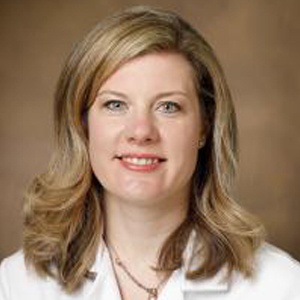Hypertension in pregnancy is common and can lead to complications for both mothers and babies. Some pregnant patients are at an especially high risk due to issues with preeclampsia or other placenta-related problems.
“These disorders can occur in those who don’t have hypertension going into pregnancy and those who do,” said Kathryn Lindley, M.D., Samuel S. Riven Director of the Women’s Heart Center at Vanderbilt University Medical Center.
“Hypertension during pregnancy is a leading cause of maternal and fetal mortality and the most frequent thing that brings people into the hospital – and it is highly associated with heart attack and stroke later in life.”
“Hypertension during pregnancy is a leading cause of mortality and the most frequent thing that brings people into the hospital – and it is highly associated with heart attack and stroke later in life.”
In a review article published in Circulation, Lindley and colleagues highlight the current standards and note opportunities to improve hypertension care in pregnancy and postpartum. The goal is to reduce pregnancy-related mortality, which has not improved in the United States in more than a decade.
“Some of the major data that’s come out in the last two years say we should be treating people’s blood pressure more aggressively than we used to,” Lindley said. “In the past, there was concern that the medicines might be harmful to the baby, or the baby wouldn’t get enough blood flow if we lowered the pressure too much.”
“The CHAP trial (Chronic Hypertension and Pregnancy) showed that moms with chronic hypertension and their babies did better if we were a little more proactive. And there’s other data showing that we should probably be treating all hypertensive disorders more actively to improve heart health in both the short and long term.”
Developing a Framework for Care
More than half of pregnancy-related deaths occur seven days to one year after pregnancy. For those who are still pregnant or immediately postpartum, a hypertensive event can present as a medical emergency.
Patients who develop signs or symptoms of serious pregnancy-related complications may seek care at clinics not equipped for an obstetric emergency, including most EMS teams, hospital-based emergency departments, standalone emergency rooms and urgent-care facilities.
“Sometimes these clinicians are not as likely to recognize a problem, because they treat this so rarely,” Lindley said. “If a pregnant woman comes in with high blood pressure, it can be life-threatening.”
Lindley worked with the American College of Obstetricians and Gynecologists (ACOG) to develop a toolkit for non-obstetricians. in people with preeclampsia at delivery and saw a difference in proteins related to blood vessel health.
“Proteins are very differently expressed in those with and without preeclampsia,” Lindley said. “This suggests there are differences in biology that link preeclampsia to preexisting health and that may link preeclampsia to future hypertensive disease.”
The researchers will also analyze metabolites, genetic factors, mental health, and environmental factors from first trimester to one-year postpartum.
“We’ll really be able to follow longitudinally all the biologic and environmental factors that contribute to the disease state,” she said.
“If we can identify the groups that might be at higher risk for hypertensive disorders, hopefully it will help us be more targeted in our interventional approaches.”
A second Vanderbilt study will follow mothers from birth to one year postpartum, collecting biospecimens and conducting serial cardiac imaging and exercise-capacity testing.
“If we can identify the groups that might be at higher risk, hopefully it will help us be more targeted in our interventional approaches.”




